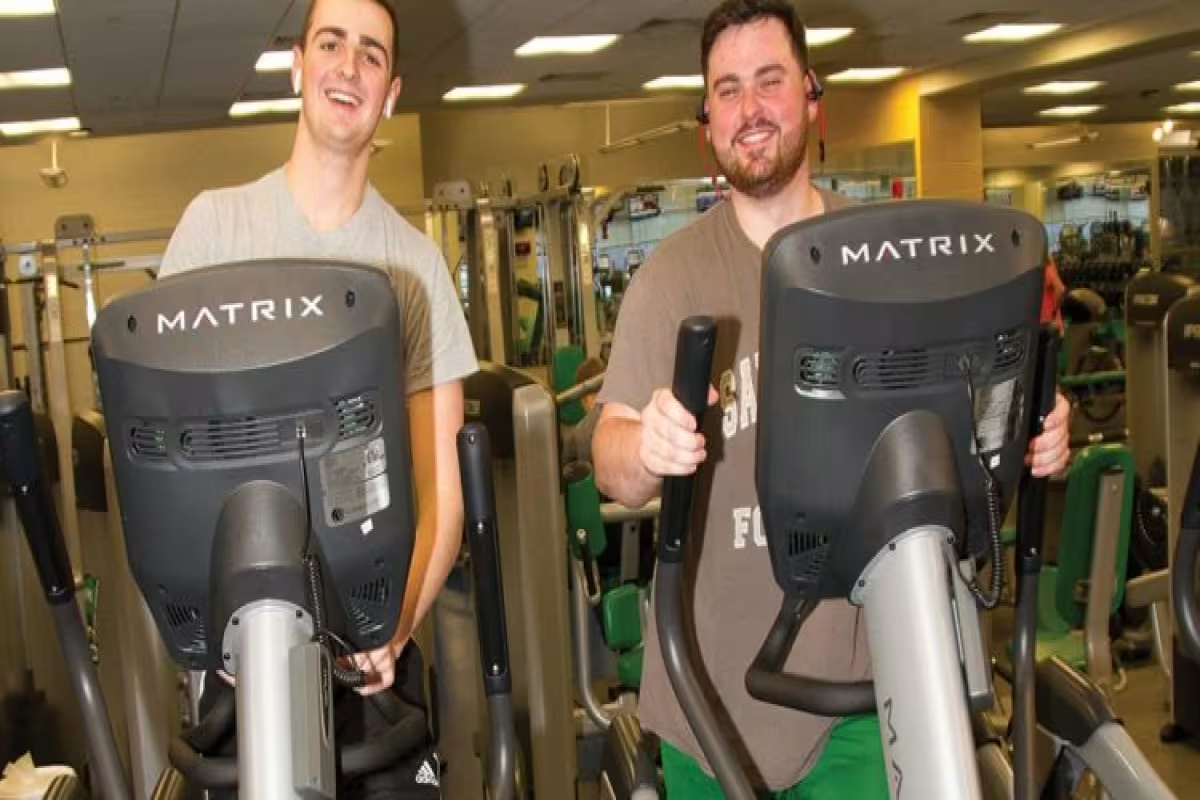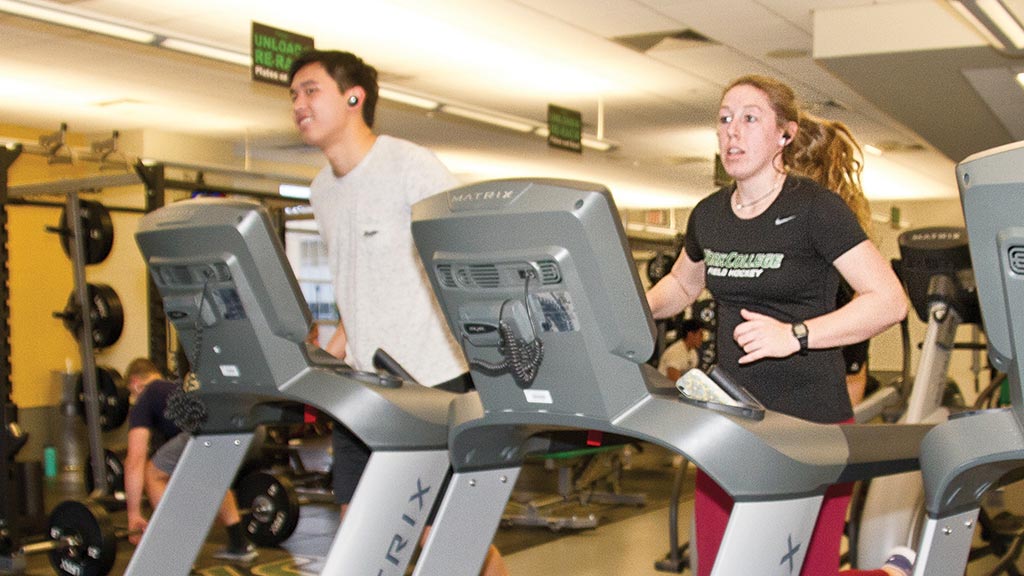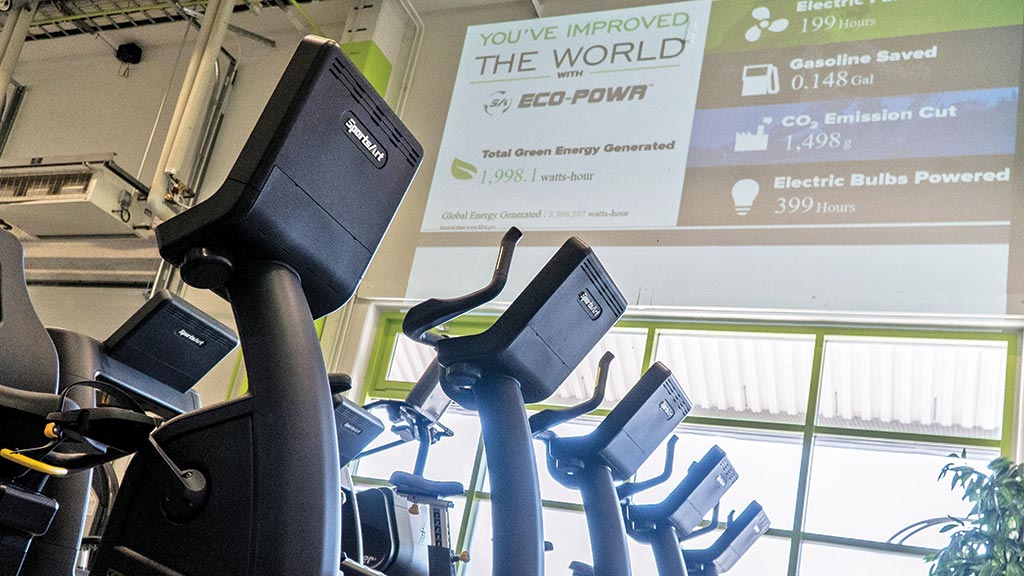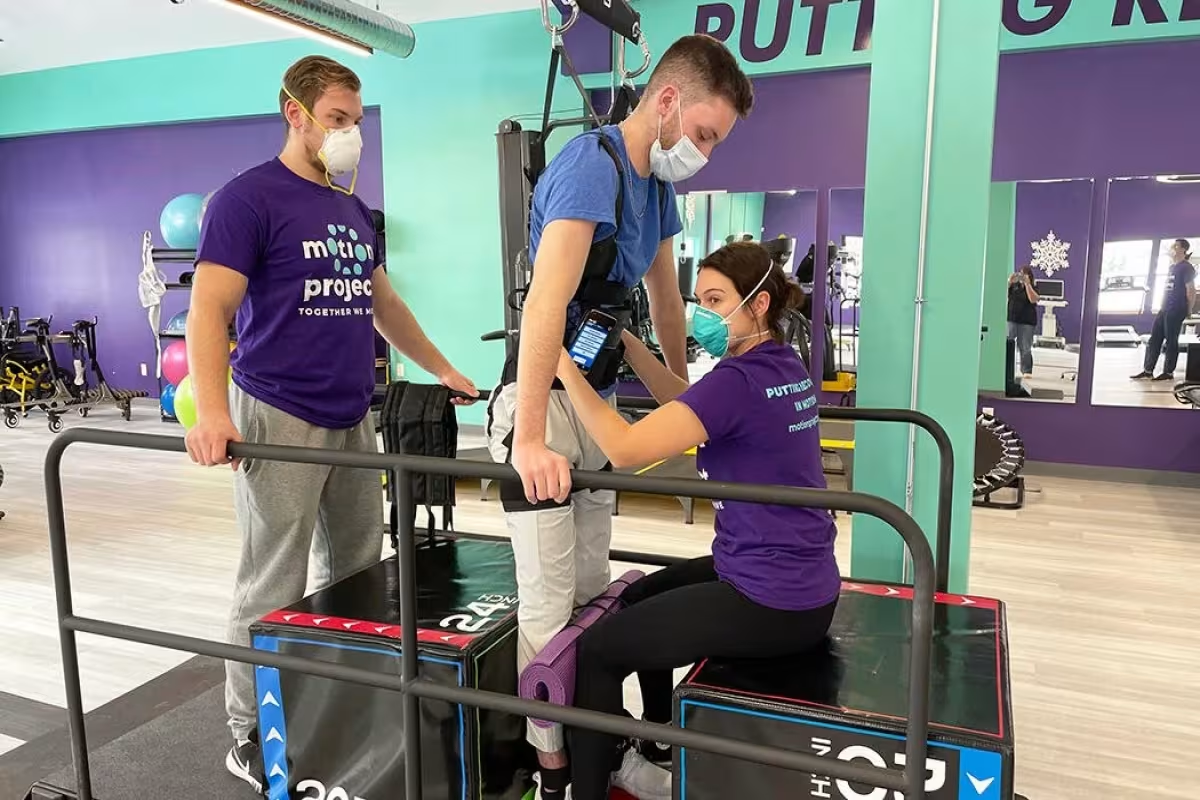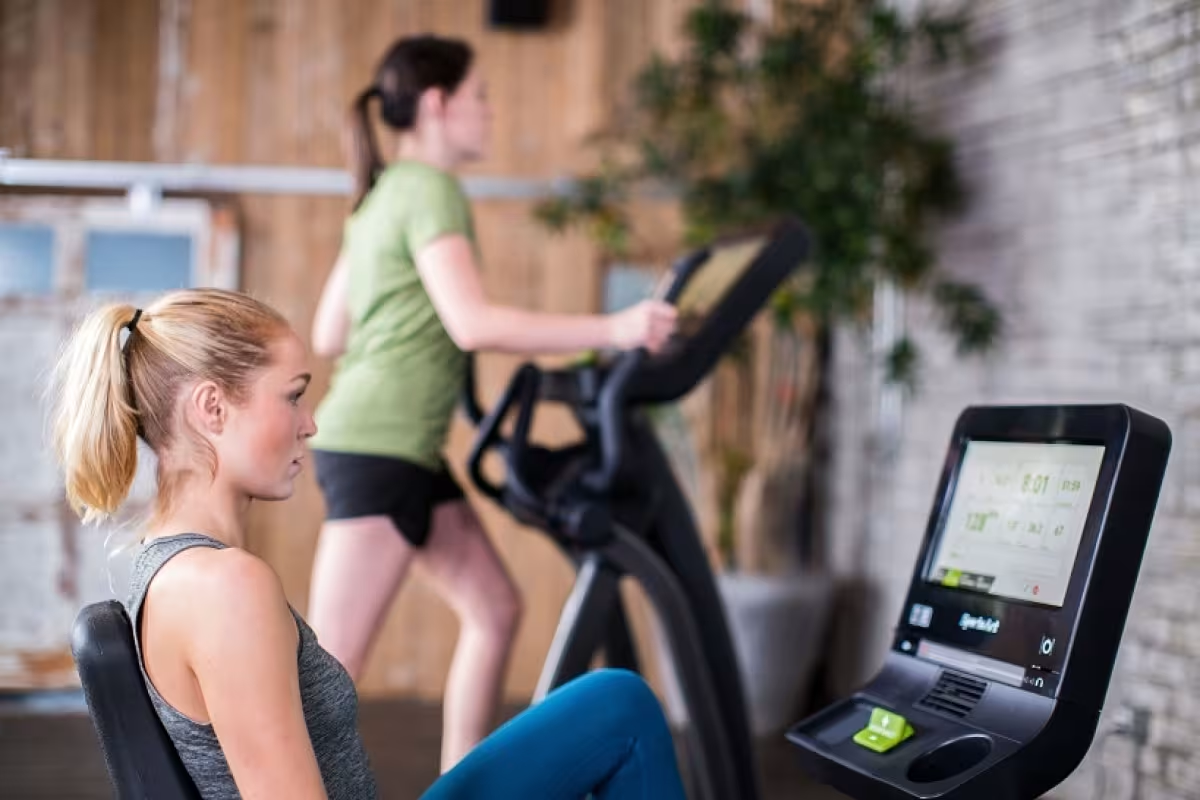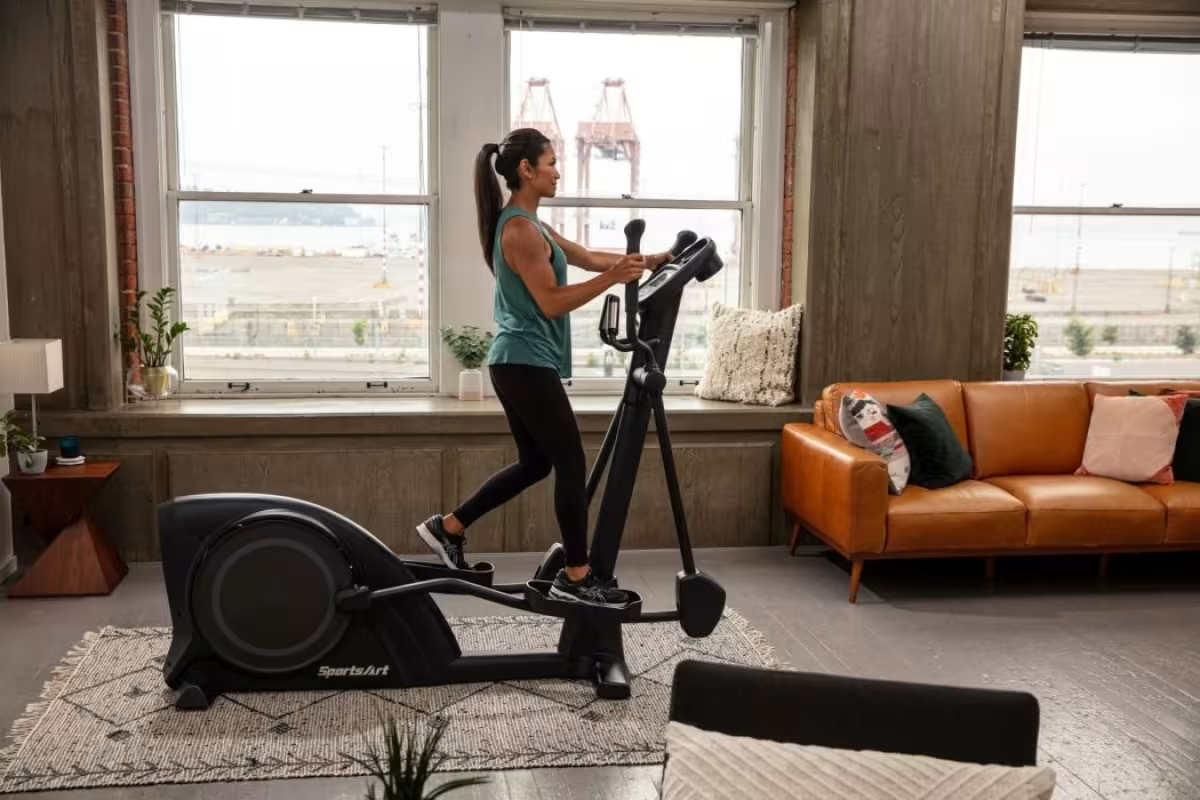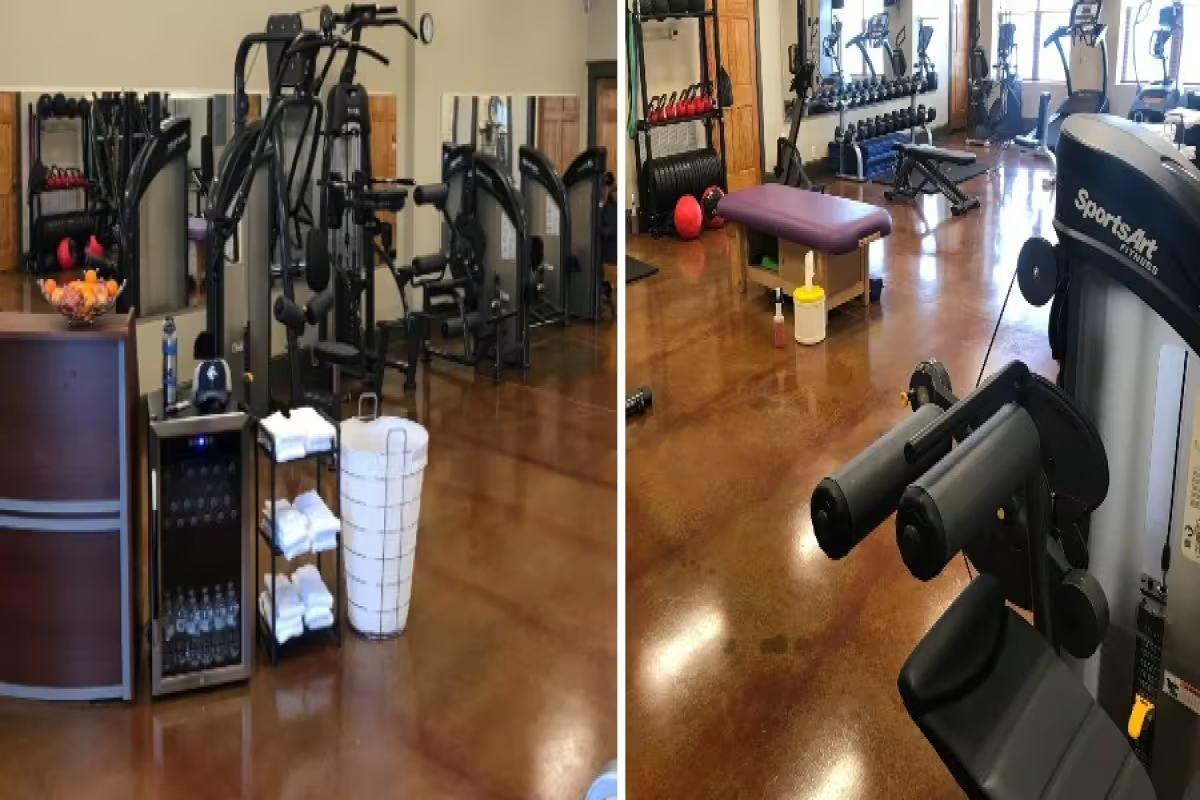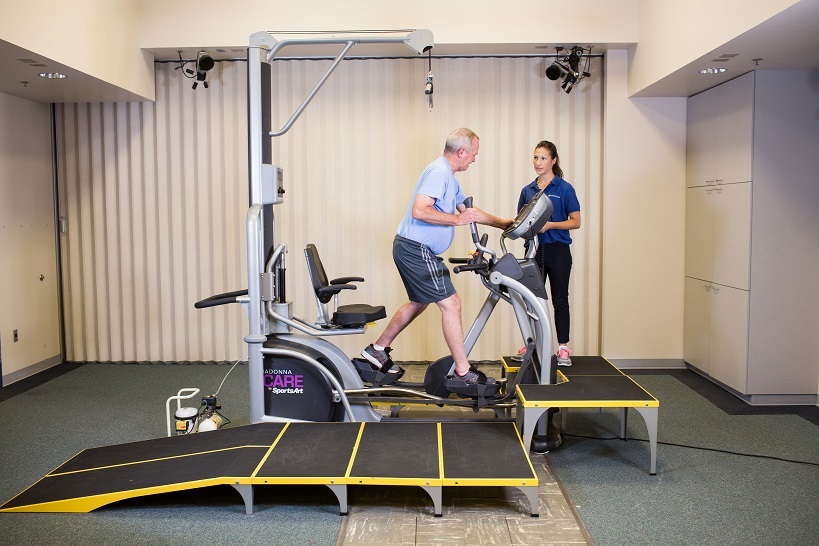SHERIDAN, WYOMING – November 5, 2025 –
You can never walk a mile in someone else's shoes, so for me, the most important thing you can do as a leader to create a truly inclusive, representative, and equitable society is to listen with an open heart and open mind to other points of view and opinions.
Asa part of our interview series called "Women Of The C-Suite" , we had the pleasure of interviewing Carina Kuo.
Carina Kuo joined SportsArt in 2014, becoming vice president of operations. Serving as general manager from 2015 to 2018, she improved communication across the company's global branches and reduced operating costs by 20%. Championing staff growth and celebrating individual contributions, Kuo, now the CEO and COO of SportsArt America, has cultivated a collaborative team environment among employees at all levels, creating a family-like culture in which Baby Boomers and Millennials work together seamlessly.
Thank you so much for joining us in this interview series! Before we dig in, our readers would like to get to know you a bit more. Can you tell us a bit about your "backstory"? What led you to this particular career path?
Mydad, Paul Kuo founded SportsArt in 1977 with a mission to leave the world a better place than he found it. In a way, you could say the company and I grew up together. My youth was filled with visits to international markets, and I was exposed to a wide variety of cultures. Looking back now, I realize just how fortunate I was to travel with my family and experience that cultural immersion firsthand.
Growing up my parents made sure my brother and I had as much information as possible so we could form our own thoughts and opinions about the world. This global exposure had a lasting impact on me. From an early age I learned the importance of having an open mind, not to judge or allow someone to judge me based on surface knowledge. Every person and every situation can be multifaceted and is an opportunity to learn and grow, mentally, emotionally, or spiritually.
I think one of the most interesting things is that I actually didn't join SportsArt immediately, I preferred to learn as much as I could on my own. I earned my bachelor's degree in manufacturing engineering technology, and after college I worked in a variety of fields including aerospace, manufacturing, and even a start-up in the fashion industry.
Taking this non-traditional route was really important to me. It was a big risk that ultimately paid off because I was able to experience and learn all aspects of what it takes operationally to run a business. I worked in a variety of capacities, including those of manufacturing engineer, industrial engineer, and supply chain analyst that allowed me to develop skills that ultimately helped me see beyond my technical skills and background and understand the bigger picture in business.
Can you share the most interesting story that happened to you since you began leading your company?
The most interesting story has to do with my transition into the fitness industry. Before joining SportsArt, I worked in e-commerce, which is extremely fast-paced and utilized the most recent technology to operate day-to-day. However, in my new role, I quickly realized that our company and industry had been slow to adopt new processes and procedures. For example, we were still writing invoices on paper vs. electronic data management. I was accustomed to running all aspects of company operations through a digital system and to my surprise I had to re-learn how to manually do a lot of things because the technology was not readily available in-house.
Can you share a story about the funniest mistake you made when you were first starting? Can you tell us what lesson you learned from that?
The funniest mistake happened to me when I was working a lot with our shipping department. Keep in mind, I was raised in Taiwan, so I'm just not familiar with some cities in the U.S., so one day I reached out to our shipping team to send an order to a client in Cheyenne. However, I totally mispronounced the name of the city! And because I was a new leader in the organization (and the founder's daughter), no one on the shipping team felt comfortable enough to reach out to me and get clarification, they just spent a lot of unnecessary time trying to figure out what city I was talking about. I learned two lessons from this situation. The first is the importance of establishing relationships with team members early on - had they felt comfortable enough with me, they could have asked for clarification on the city and didn't have to waste time figuring out what city I meant. The second lesson was that, as a leader in the company, I needed to become more familiar with the cities in the U.S. that I was going to be working with on a day-to-day basis.
None of us are able to achieve success without some help along the way. Is there a particular person who you are grateful towards who helped get you to where you are? Can you share a story about that?
I don't have a single person, instead I have a group of people that I'm grateful for. Over the years my husband as well as my close friends have supported me and helped me stay grounded. This diverse group of successful individuals has provided me with great insight and direction over the years.
In my work, I often talk about how to release and relieve stress. As a busy leader, what do you do to prepare your mind and body before a stressful or high stakes meeting, talk, or decision? Can you share a story or some examples?
For me, the best way to prepare for a high-stress situation is to surround myself in silence. I love to take a quiet walk or go for a swim - this helps me concentrate on the task at hand. Taking that time to do some self-reflecting really helps me - I can focus on the task at hand and the silence also provides me with a sense of calm before heading into a stressful meeting or making a hard decision.
As you know, the United States is currently facing a very important self-reckoning about race, diversity, equality and inclusion. This may be obvious to you, but it will be helpful to spell this out. Can you articulate to our readers a few reasons why it is so important for a business or organization to have a diverse executive team?
I believe that it's important for an organization to have a diverse executive team because each individual will bring a greater depth and breadth of experience and perspective to the table. By having diversity, culturally as well as racially within the company, everyone has a unique point of view that will ultimately help provide a deeper connection to employees, partners and clients.
As a business leader, can you please share a few steps we must take to truly create an inclusive, representative, and equitable society? Kindly share a story or example for each.
You can never walk a mile in someone else's shoes, so for me, the most important thing you can do as a leader to create a truly inclusive, representative, and equitable society is to listen with an open heart and open mind to other points of view and opinions.
I'm reminded of a conversation I had with someone who had a very distinct point of view on immigration, but as an immigrant myself, he was open to hearing my thoughts and I was able to help clarify some misconceptions he had on the immigration process. At the end of the conversation, we were both able to walk away respecting each other's opinion on the topic as well as understand each other's perspectives on the subject.
Ok, thank you for that. Let's now jump to the primary focus of our interview. Most of our readers - in fact, most people - think they have a pretty good idea of what a CEO or executive does. But in just a few words can you explain what an executive does that is different from the responsibilities of the other leaders?
Leaders within an organization typically provide insight to the CEO on the health of the company; however, it's the CEOs duty to take that information and make decisions that affect the overall growth and future vision for a company.
What are the "myths" that you would like to dispel about being a CEO or executive. Can you explain what you mean?
One myth I would like to dispel is that all CEOs are the same. There is no shortage of schools for business people of every specialty: accountants, engineers, information technology, marketers, etc; however, there is no school for CEOs - except the school of experience. Each executive or CEO must take all the knowledge from their past experience and background to develop their own unique over-arching philosophy about how they can best add value and lead the organization.
In your opinion, what are the biggest challenges faced by women executives that aren't typically faced by their male counterparts?
You face a lot of assumptions as a female leader, especially as a younger female leader. And more often than not, these assumptions are made about you before you even speak and that's especially frustrating.
I know as a society, we've made progress toward gender equality but clearly we're not quite there. A 2018 study conducted by the University at Buffalo School of Management found that women hold just 26 percent of executive-level positions in S&P 500 companies. This same study uncovered that showing sensitivity and concern for others - stereotypically feminine traits - made someone less likely to be seen as a leader. Personally, I believe the care, concern, and empathy I show from my leadership team as well as our employees only makes SportsArt stronger.
What is the most striking difference between your actual job and how you thought the job would be?
Going to school you learn about what it takes to be a business leader, you study and profile successful CEOs, so, when I stepped into this role, I initially thought I knew what standard set of responsibilities would include, however, I quickly realized I was wrong and that not every day would be the same. As CEO your job could be anything - your team may need you to help set up a tradeshow booth, or one day you're making HR decisions and the next you could be meeting with your engineering team to discuss the next big product innovation in development.
Is everyone cut out to be an executive? In your opinion, which specific traits increase the likelihood that a person will be a successful executive and what type of person should avoid aspiring to be an executive? Can you explain what you mean?
I absolutely believe that everyone can be an executive, especially if their role is within an industry or category they are passionate about. Leadership isn't a personality trait, it's a skill and skills can be taught, you just must be willing to learn.
What advice would you give to other leaders to help their team to thrive?
As more and more women step into leadership roles, I think it's important that you give yourself grace and let the work speak for itself. By showing grace, to yourself and to your team, you're exhibiting a combination of elegance and confidence, infused with a certain quietness and humility. Grace will help you embrace flexibility and help you learn how to deal with interruptions with understanding, and even laughter. Given the world we live in today, I think grace is something we all need now more than ever.
How have you used your success to make the world a better place?
I try to share my success not only with my colleagues, but also with my friends and family. Additionally, I continue to remain connected with my alma mater to help encourage female interest in science-based careers.
What are your "5 Things I Wish Someone Told Me Before I Started" and why? (Please share a story or example for each.)
The first thing I wish someone would have told me was that not everyone is going to like you or your decisions. As a female leader, we need to put our feelings aside and accept the fact we don't have to please everyone when making business decisions that help the greater good and future growth of the company.
I think my second and third points go hand in hand. I wish someone would have told me it's okay to make mistakes because sometimes, not all decisions are clear cut. As a leader you can't let "analysis paralysis" keep you from making decisions. The reality is, important decisions end up flawed even when you have the best information and intentions. This one time I was dragging my feet on making a decision, because the final answer wasn't a clear cut choice and my delay was actually putting a department in jeopardy because I wasn't making a quick enough decision.
I know I mentioned this earlier, but it's important enough to say again, no matter what job you take, not every day will be the same. The role of an executive within a company is so multifaceted - you will face challenges and situations every day that test your patience, skills, and mindset. What separates a good leader vs. bad leader is how they handle the challenges they face every day. For a long time as an engineer, I just focused on the numbers, it's something that came easy to me, but as a CEO I have to look at the bigger picture beyond the numbers. I have to take into consideration operations, logistics, regulations and solve for the bigger picture.
Finally, executives need to learn how to embrace their soft side. It's about finding a balance between wearing your emotions on your sleeve and practicing traditionally tougher leadership skills. "Soft" skills include the ability to be compassionate, empathetic, sensitive, and human by creating a safe psychological space in the workplace - especially in business today, these are some of the most coveted skill sets in the business world. Leaders need to learn how to embrace and develop these characteristics because creating a workplace environment where everyone feels supported, listened to and trusted can only help your company move forward and succeed in all aspects.
You are a person of great influence. If you could inspire a movement that would bring the most amount of good for the greatest number of people, what would that be? You never know what your idea can trigger.
If I could inspire a movement, I would encourage people to be more empathetic. As humans we should be open because the ability to connect empathically with others - to feel with them, to care about their well-being, and to act with compassion - is critical. This simple behavior shift could help people get along more, work more effectively, and collectively help us thrive as a society.
Can you please give us your favorite "Life Lesson Quote"? Can you share how that was relevant to you in your life?
I think it's so important that leaders, especially female leaders, embrace the experience. That's why Amelia Earhart's quote "adventure is worthwhile in itself" has always stuck with me.
We are very blessed that some very prominent names in Business, VC funding, Sports, and Entertainment read this column. Is there a person in the world, or in the US with whom you would love to have a private breakfast or lunch with, and why? He or she might just see this if we tag them.
I think it would be fascinating to sit down and share a meal with Jane Goodall. Like me, she's a female leader in a male-dominated field; a little-known fact about me is that I'm also a huge animal lover. I admire her drive and tenacity. Whether she is speaking on the connection between the abuse of animals and nature with climate change or speaking on the shifts in thinking and behavior that need to be made to save us, to speaking on the status of women and why equality is so important. Jane Goodall is an inspiring legend.
Thank you for these fantastic insights. We greatly appreciate the time you spent on this.

Charlie Katz
